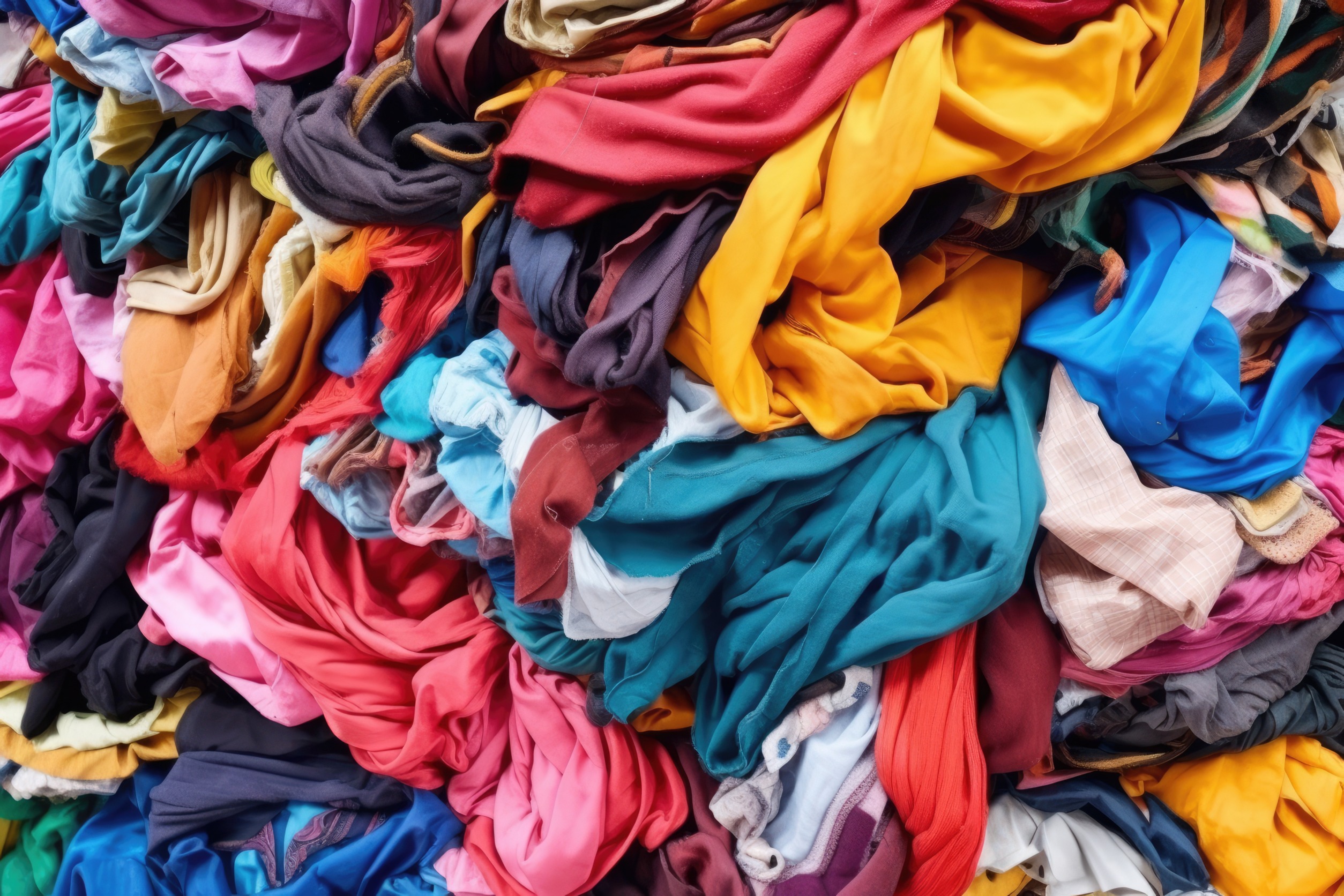BY THE OPTIMIST DAILY EDITORIAL TEAM
The environmental impact of the fashion industry is becoming increasingly difficult to ignore, and California is leading the way in addressing the growing issue of textile waste. With the fast fashion cycle overwhelming consumers and landfills, California’s new law, the Responsible Textile Recovery Act, could make the state the first in the nation to require manufacturers to assume responsibility for recycling the apparel and textiles they make.
A growing environmental crisis
The United States has seen an alarming growth in textile waste. Since 1960, the volume of discarded clothing and household textiles has increased tenfold, reaching more than 17 million tons by 2018. Surprisingly, 85 percent of textiles wind up in landfills, where they generate methane gas and release hazardous chemicals into the environment. Although over 95 percent of these materials—including textiles, yarns, and zippers—are recyclable, only a small percentage are ever reused.
The rise of “fast fashion”—cheap, low-quality apparel intended for short-term use—has exacerbated the waste problem. The fashion industry currently accounts for 10 percent of global carbon emissions, surpassing international aviation and maritime shipping combined. As customers buy and discard apparel at record rates, the environmental consequences become impossible to ignore.
A first-in-the-nation law
California’s new Responsible Textile Recovery Act seeks to address this issue by moving the responsibility for textile recycling from consumers to manufacturers. Under this measure, which is now awaiting Governor Gavin Newsom’s signature, manufacturers of garments, beds, towels, and other textiles must establish and support a statewide system for reusing, mending, and recycling their products. This landmark legislation aims to establish a more sustainable, circular economy for textiles.
“Since the 1960s, the amount of textile waste we generate has skyrocketed, and our current systems just can’t keep up,” said State Senator Josh Newman, who sponsored the bill. “This bill is about making producers responsible for the entire lifecycle of their products.”
If passed, the proposal will allow California residents to drop off unwanted or damaged clothing and textiles at specified collection places, such as thrift stores, charities, or other easily accessible locations, for sorting and recycling. Companies will be responsible for establishing a non-profit company to handle the recycling system by 2026, with full implementation scheduled for 2028.
A collaborative effort
Environmental organizations, waste management specialists, and stores such as Ikea, Everlane, and Goodwill have all expressed strong support for Newman’s plan. Over 150 organizations have supported the legislation, which is viewed as a significant step toward minimizing the environmental effects of the fashion industry.
“Sustainable fashion is about more than just reducing waste—it’s about changing how we produce, consume, and dispose of clothing,” said Randi Marshall, head of sustainability at H&M Americas. The company, which has worked on comparable recycling schemes in France and the Netherlands, is already familiar with the procedure and keen to support the legislation in California.
Economic and environmental benefits
Supporters of the Responsible Textile Recovery Act say that the law will minimize waste while also creating economic opportunities. The bill is estimated to create more than 1,000 green jobs, ranging from textile sorting and recycling to program infrastructure management. Furthermore, it will encourage manufacturers to implement greener, less wasteful processes, resulting in more sustainable designs.
Critics have expressed fears that the measure may raise consumer expenses, but Newman believes that any rise will be minor. He predicts that the additional cost to producers will be less than ten cents per garment. “The environmental costs of textile waste far outweigh the small financial costs of recycling,” stated Mr. Smith.
Dr. Joanne Brasch, advocacy director for the California Product Stewardship Council, which co-sponsored the bill, agrees. “We’re going to pay for textile waste one way or another—either through higher taxes and garbage fees or by addressing the problem at its source,” she said. “This legislation offers a proactive, long-term solution.”
Learning from global leaders
California is not the first to pass legislation addressing textile waste. Several countries, like France and the Netherlands, have already implemented comparable regulations. France, for example, enacted a textile recycling law in 2007. At the time, just 18 percent of the country’s textile waste was diverted for reuse or recycling. Today, that figure has grown to more than 39 percent.
“We’ve learned a lot from countries like France,” explained Brasch. “We want to make sure California’s program is as effective and replicable as possible, so other states can follow suit.”
Global impact of fashion waste
Aside from the environmental impact, textile waste has major societal consequences. Much of the world’s abandoned apparel wind up in foreign markets, primarily in impoverished countries. Nations such as Ghana, which imports up to 15 million used clothing every week, are trying to manage the garbage. These garments often end up in landfills or pollute local ecosystems, resulting in a process known as “waste colonialism.”
Organizations such as the Or Foundation advocate for extended producer responsibility schemes, such as California’s new measure, to help put an end to this damaging behavior. The goal of requiring corporations to handle their own textile waste is to reduce the amount of clothing that ends up in landfills in poorer countries.
A new era in fashion
The Responsible Textile Recovery Act is a big step forward in decreasing the garment industry’s environmental and social effects. If successful, it could serve as a model for other states and countries attempting to handle their own textile waste issues.
As Newman noted, “We have an opportunity to lead by example, not just in the U.S., but globally.” California is paving the way for a more sustainable future by creating a system that holds producers accountable—one that reduces clothing waste, increases recycling, and makes the fashion sector more circular.











